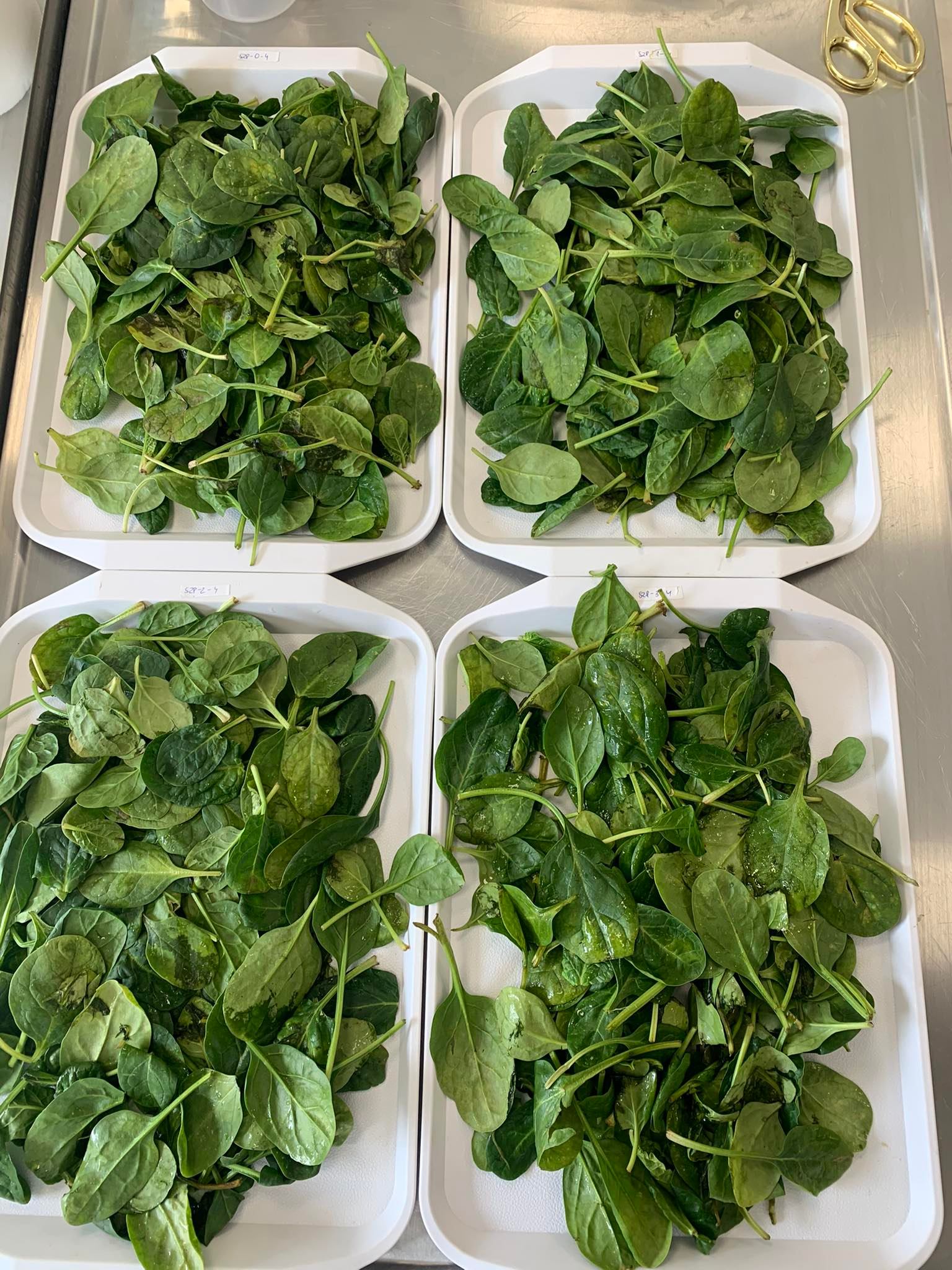
Arugula and spinach were used to evaluate the effects of slow release of 1-MCP (1 ppm, 2 ppm, 4 ppm) on the commercial value and quality characteristics of leafy greens. To assess this impact, Vidre+™ a slow-release sticker was used inside the packaging. The results were compared with a control group that did not use stickers. The samples were stored at 6 degrees Celsius during the entire test.
The aim of the experiment was to examine the influence of Vidre+™ during storage across five categories:
1. weight loss
2. wilting
3. leaf yellowing/chlorophyll content
4. the green pigment – important for offering nutritional
5. overall visual quality
Visual Quality Ratings (VQR) were important to analyze for these leafy greens since many purchasing decisions are often influenced by appearance, making the assessment of visual quality crucial from the consumer’s perspective.
Arugula is a peppery-flavored leafy green vegetable rich in nutrients and culinary versatility.
Throughout the first 14 days of storage, no wilting was observed in any samples. After 21 days, slight wilting was noted in the untreated samples (10-20% wilting), which was not observed in the Vidre+™ until after 24 days. Related to wilting, the weight loss of arugula was the lowest with Vidre+™ compared to the control group.

photo: Leaf yellowing 1 – none; 2- 10-20% yellowing; 3 – 20-30% yellowing; 4 – 30-50% yellowing; 5 – >50%
Regarding leaf color and visual quality, after 14 days of storage, color changes were noticed in the untreated samples (10-20%). A similar degree of yellowing was observed in samples treated with Vidre+™, but only a week later. While leaf yellowing significantly increased in untreated samples (30-50% yellowing) after 24 days, the samples treated with Vidre+™ remained at the same color level.

photo: Day 24 Arugula Evaluation
Regarding overall Visual Quality, by day 10 of storage, arugula samples not protected with Vidre+™ exhibited a slight decrease in Visual Quality Rating (VQR), but were highly deteriorated by day 21 and notably unsuitable for consumption by day 24. Meanwhile, after 24 days, samples protected with Vidre+™ still maintained a good condition, having only moderate defects of leafy tissue.
The spinach was another leafy green that was subjected to examination to assess the impact of Vidre+™ on its freshness.
Throughout the 21-day storage period, the smallest weight loss was observed after using Vidre+™. Slight wilting (10-20%) was evident in untreated samples after 10 days, a level not reached in Vidre+™ spinach until after 14 days.

photo: Leaf yellowing 1 – none; 2- 10-20% yellowing; 3 – 20-30% yellowing; 4 – 30-50% yellowing; 5 – >50%
Regarding spinach leaf color, in the control group, leaves began yellowing after 3 days, with noticeable color changes at 7 days and a clear shift at 14 days. Conversely, samples treated with Vidre+™ showed a slight yellowing after 10 days, remaining unchanged until the end of the experiment.
With overall Visual Quality, after 7 days of storage, spinach without Vidre+™ protection exhibited a notable decrease in VQR. By 10 days, the quality of untreated spinach was poor with serious defects. By 21 days, untreated samples had deteriorated to a non-edible state. Samples treated with Vidre+™ displayed a better VQR, described as good after 7 days. Samples treated with Vidre+™ always maintained a 3-day shelf life advantage over the untreated spinach.

photo: Day 7 Spinach Evaluation
Total chlorophyll concentration notably decreased (almost 20%) after 7 days in untreated samples. In spinach treated with Vidre+™, the concentration level remained almost unchanged for the 7 days and maintained a notable difference from the untreated throughout the experiment.
The research has shown the positive effect of using Vidre+™ technology on protecting the quality of leafy greens during transport and shelf life. Both arugula and spinach treated with Vidre+™ retained their commercial value for 3-7 days longer than untreated samples regardless of the dose of 1-MCP. In all cases, Visual Quality Ratings, something important to consumers, always showed an advantage with Vidre+™ protected leafy greens.
For more information visit: WEBSITE & LinkedIn Page
More Vidre+™ trial results can be found on the COMPANY BLOG
If you are eager to expand your knowledge about Vidre+™ technology get in touch: krzysztof.czaplicki@freshinset.com.